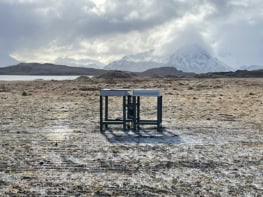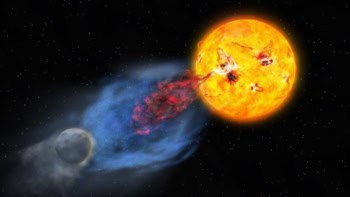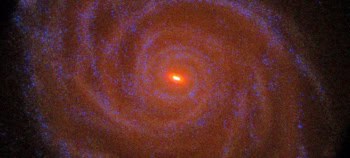Andrew Robinson reviews The End of Astronauts: Why Robots Are the Future of Exploration by Donald Goldsmith and Martin Rees

When NASA’s Curiosity rover landed on Mars in 2012 and began to explore a crater, it had to be constantly guided from Earth, so it wouldn’t be thwarted by large rocks, sand dunes and deep trenches. By contrast, the US agency’s Perseverance rover, which landed on the red planet in 2021, can steer clear of such obstacles with ease, thanks to the use of artificial intelligence. It has six hazard-detecting cameras, or “HazCams”, of which four are in the front and two in the rear. At intervals, the rover stops to acquire stereo images that let it analyse different pathways and choose the best one. Although Perseverance cannot identify potentially interesting sites and geological formations with AI, such an increasingly intelligent ability is expected to develop before the launch of a not-so-distant future Mars rover.
“No-one doubts that our ever-improving machines can perform in space more efficiently, less expensively and more safely than humans can,” write astronomers Donald Goldsmith and Martin Rees at the outset of their thought-provoking vision of the coming decades in space exploration. Their new book – The End of Astronauts: Why Robots Are the Future of Exploration – controversially advocates the replacement of astronauts with robots. “But can they equal human explorers’ abilities?” they ask. “And does this question miss a more important issue: how can we maintain public interest and inspiration, or fulfil our destiny as humans, without visiting our celestial neighbours in person?”
Human space exploration was of course key to the Apollo programme and its heroic Moon landings of 1969–1972, which inspired the authors at that time, as they make clear. It further captured the imagination of the public through the 1966 television series Star Trek and the 1968 movie 2001: A Space Odyssey, neither of which they cite, apart from an uncredited reference to astronauts who (as in Star Trek) “boldly go where no man has gone before” and robots that “can go boldly where humans rightly fear to tread”. Such exploration seemed to belong in the human tradition of daring terrestrial explorers. But today, the public fascination with space exploration is so low that, according to recent polls, only 10–20% of Americans are “highly interested” in it and some 63% give “top priority” to satellite monitoring of Earth and its threatened environment.
Jeffrey Hoffmann, a current scientist-astronaut interviewed by the authors in 2020, encapsulates the astronaut versus robot issue. Hoffmann has been on five space missions, in which he helped to repair NASA’s Hubble Space Telescope. “I want to know what it’s like being on Mars!” Hoffmann says without hesitation. Yet he summarizes the issue with the comment: “If it can be done robotically, do it.”
Chris McKay, an astrobiologist who was involved in planning NASA missions to Mars, tentatively agrees. Although not an astronomer himself, he warned in an interview with the authors in 2021 that a robot that can emulate a capable human field-assistant would require current robotic capabilities to be doubled at least five times, and that each doubling currently requires more than a decade. However, he believes that “innovations in the space biz may greatly shorten that”. As for a robotic equivalent of a field scientist, this is not on the horizon, says McKay. Therefore, according to the authors, the debate depends on “how much we are willing to pay for the advantages that humans can provide”.
The total cost of the five Hubble repair missions would have financed the building and launching of seven replacement telescopes
Consider the financing of the Hubble telescope, the “most celebrated human–robot hybrid project”. Following Hubble’s launch in 1990, it required five astronaut missions – in 1994, 1997, 1999, 2002 and 2009 – to correct its mirror’s defective shape and add corrective lenses, better detectors and improved cameras. Yet, according to the director of the institute managing the Hubble, the total cost of these five repair missions would have financed the building and launching of seven replacement telescopes. In other words, to have replaced the telescope – the robotic solution, so to speak – would have been much more economical than its repair, not to mention healthier for astronauts. As astronaut Mike Massimino, who joined two Hubble missions, is quoted saying, “What you feel is that the room is spinning and flipping around you while you’re staying perfectly still, which causes the worst vomit-inducing feeling of vertigo you’ve ever experienced. After a couple of days you get used to it.”
Space finance occupies a later chapter, with sections on NASA, China, the European Space Agency, Russia, India and Japan. But the book’s basic structure is organized around exploration’s increasing distance from the Earth. There is a chapter on near-Earth orbit (also known as low-Earth orbit) – which still dominates our activities in space following the launch of the Sputnik satellite by the Soviet Union in 1957 and the International Space Station in 1998. It is followed by four chapters on the exploration of the Moon, Mars, the asteroid belt (including mining) and the conceivable (if seemingly crazy) colonization of space by freely orbiting permanent habitats.
A final chapter addresses the formidable, unresolved difficulties of governing space to control potential conflict between international organizations, national governments, corporations, well-funded groups and wealthy individuals – such as Jeff Bezos, founder of Blue Origin, and Elon Musk, founder of SpaceX. “For now, the sweeping expanse of space provides a domain of potentially eternal discord: a lawyer’s paradise – except that no courts exist to exert legal oversight.”
So what are the likely space developments in the lifetimes of current inhabitants of the Earth, according to Goldsmith and Rees? In their epilogue, they decline to predict what might happen beyond the 2040s. Before then, however, they hazard three “conservative” predictions (while firmly dismissing the colonization of Mars envisioned by Musk, who wishes to die there). First, Mars will continue to dominate space exploration, even if China establishes bases with astronauts on the Moon, as seems likely. Second, whether or not astronauts land on Mars, the search for Martian life will escalate – dramatically if we discover living Martian microbes. Third, the outer solar system will attract more attention, because of the search for Martian life. The first two predictions depend on both astronauts and robots – in wisely unpredicted proportions – while the third involves robots guided from Earth.
- 2022 Harvard University Press 192pp £20hb



